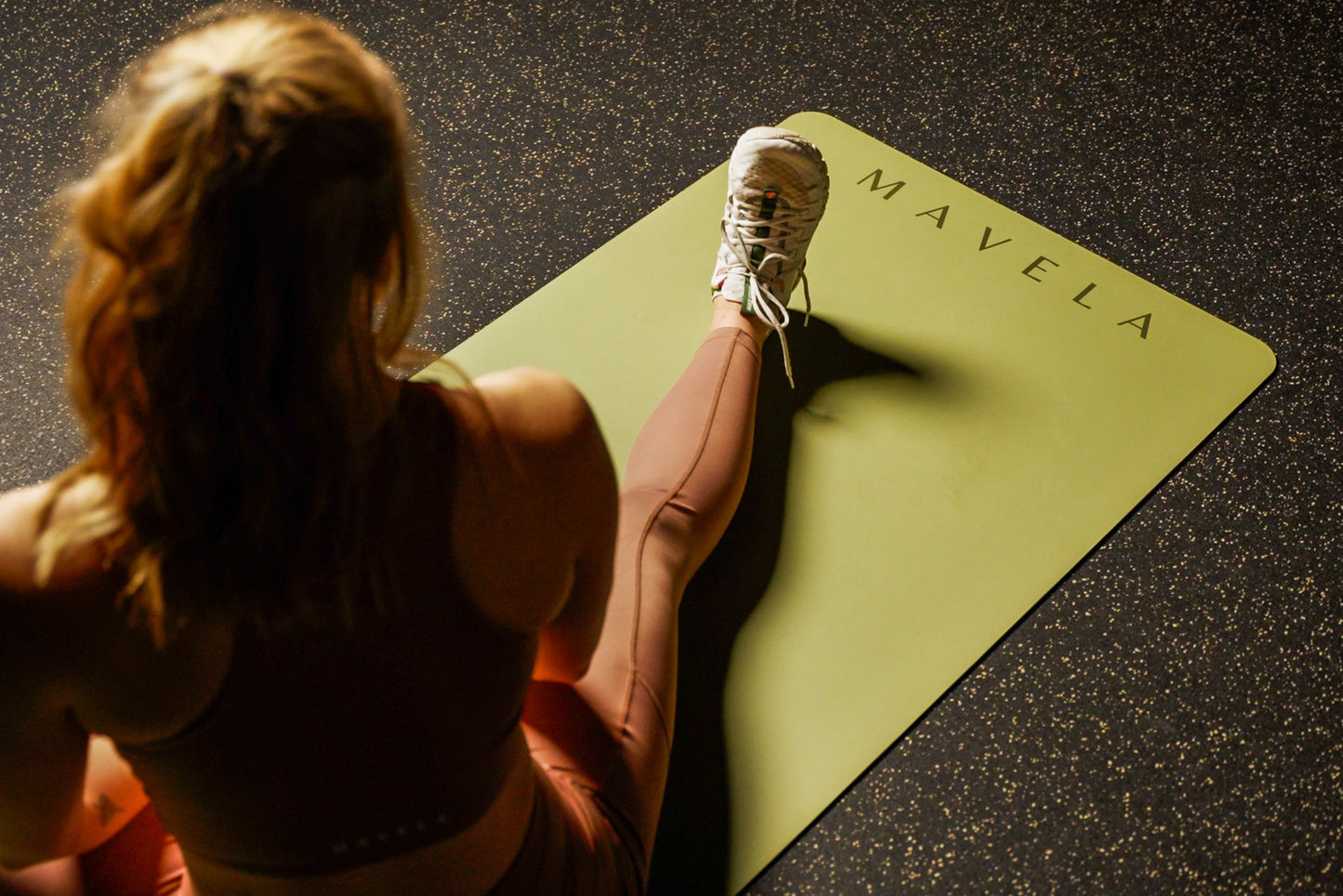Support recovery, mobility, and injury prevention with these targeted moves.
Triathlon training puts your body through a lot. From pounding pavement on the run to long hours in the saddle and repetitive swim strokes, tight hips, hamstrings, and lower backs are practically inevitable. Prioritizing mobility can help you recover faster, move more efficiently, and reduce your injury risk.
Here are five effective stretches every triathlete should include in their routine:

1. Standing Quad Stretch
Loosens up the front of the thigh and improves posture after long rides or runs.
Stand tall, bend one knee, and gently pull your foot toward your glute. Keep your knees aligned and hips neutral. This stretch targets the quadriceps and hip flexors—muscles that take a beating during cycling and running.
Why it matters: Tight quads can limit stride length and pull your pelvis forward, affecting your running form and potentially leading to low back pain.

2. Downward Dog
Full-body reset for calves, hamstrings, shoulders, and spine.
Full-body reset for calves, hamstrings, shoulders, and spine.
From a high plank, lift your hips up and back into an inverted “V.” Press your heels toward the floor and reach through your arms. This dynamic yoga pose helps release tension throughout your posterior chain while building shoulder stability and core awareness.
Why it matters: It’s a go-to stretch for improving running stride, cycling posture, and shoulder mobility for swimming.

3. Low Lunge with Goal Post Arms
Opens tight hips and encourages upright posture.
Step one foot forward and lower your back knee. Lift your chest and bend your elbows to a 90-degree “goal post” position. This variation not only stretches the hip flexors but also activates your upper back and shoulder muscles.
Why it matters: Long hours on the bike and poor posture while swimming can lead to shoulder and neck stiffness. This stretch addresses both hip mobility and upper-body alignment.

4. Pigeon Pose or Figure Four Stretch
Deep glute and hip release to support mobility and prevent IT band issues.
Pigeon: Bring one shin forward on the mat and extend your back leg behind you.
Figure Four: Lie on your back, cross one ankle over the opposite thigh, and gently pull both legs in. Both variations target the piriformis and glutes—areas that often tighten from repetitive running and cycling.
Why it matters: Releasing the glutes can help reduce IT band tension and keep your lower back and knees happy.

5. Seated Forward Fold
A calming stretch to lengthen the spine and release hamstrings and calves.
Sit on the floor with your legs extended, then fold forward from the hips, reaching for your feet. Keep your spine long and avoid forcing the stretch.
Why it matters: This stretch helps decompress the lower back and lengthen the legs after intense training. It also promotes parasympathetic nervous system activation—great for winding down.
Consistency Matters
Mobility work doesn’t have to take hours. Even 5–10 minutes of stretching after your workouts or before bed can go a long way. Incorporate these stretches 3–5 times per week to keep your body primed for performance—and feeling good along the way.
Explore more tools to support your endurance journey at www.shopmavela.com

